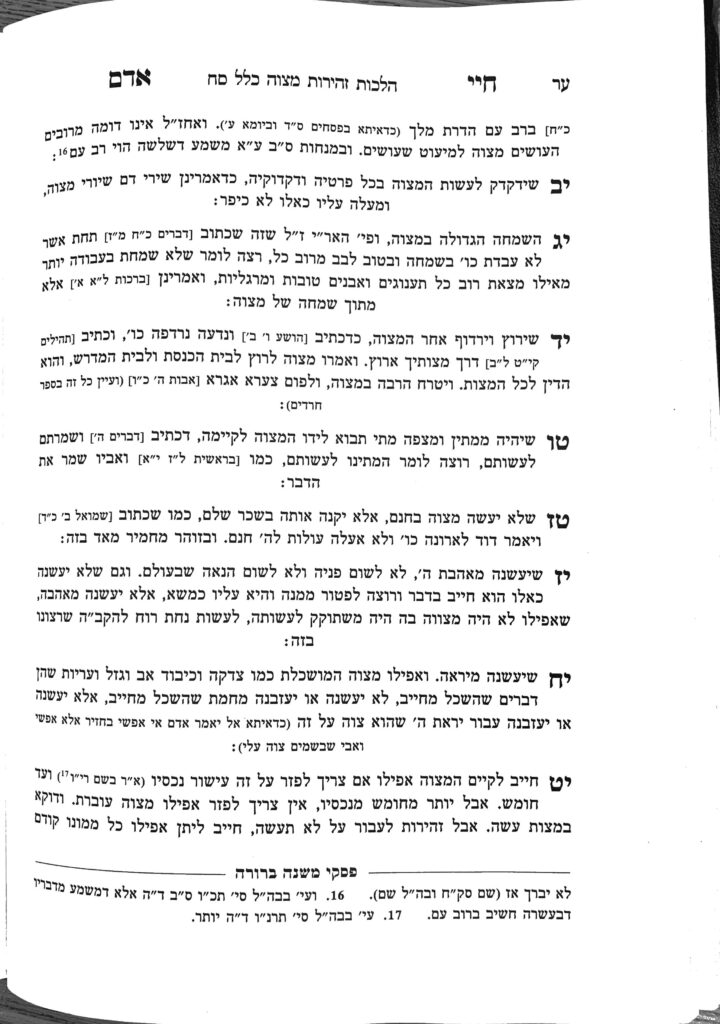We are beginning siman 19, which discusses spending money on mitzvos. The Chayei Adam writes that a person must perform a mitzvah even if the mitzvah will cost a large portion of what they own. The Chayei Adam starts by saying that one must spend up to one tenth of their money for a mitzvah, and then points out that one must spend all the way up to one fifth. For example, if they cannot borrow tefillin, and the only way to fulfill the mitzvah is by buying them, if they have $20,000, they would be chayav to spend up to $4,000 to purchase tefillin. If the tefillin cost more, they are considered an anus and not chayav to spend it.
The Minchas Chinuch (423) contemplates whether this exemption of one fifth only applies to a one-time mitzvah. He suggests that for a constant mitzvah, which a person will constantly be mevatel by not performing, a person may be obligated to pay more than one fifth. He bases his suggestion on a Ran, who discusses that when one is transgressing an aveirah for the sake of pikuach nefesh, we still attempt to limit the aveiros. For example, if a person must eat non-kosher, if there is a choice to feed someone chazir or cheilev, we prefer to feed them the chazir because it is a lav, while the cheilev is kares. If there is a choice between chillul shabbos to slaughter kosher food or chazir, we would feed them chazir, because the chazir is a lav and shechita is a chiyuv misah. However, if a person needs to eat multiple kazeysim of food, the Ran says it is preferable to slaughter the animal, which is only one violation of shabbos, rather than feed the person chazir, for which every kezayis is its own lav. Thus, we see that multiple aveiros carry greater weight than a single aveirah. Arguably, one could apply this concept to being mevatel a mitzvah on a constant basis as well, such as mezuzah or tefillin. The Mishnah Berurah does mention this concept, and the assumption of the poskim is that we do not differentiate between different types of mitzvos.
The source for this spending limit is the Gemara in maseches Kesubos. The Gemara says that when the Sanhedrin was in the city of Usha (after leaving Yerushalayim), they enacted a takana that when one gives money for tzedakah or spends money for mitzvos, they should not give more than one fifth of their money. The Gemara says that they made the takana out of concern that giving too much will move them to a state of poverty which will require others to support them.
There are some exceptions. For example, regarding neiros Chanukah, it says that even a poor person must collect money or sell the shirt off their back in order to light the neiros.
We will continue to discuss the exceptions and other applications of this concept in further shiurim, be’ezras Hashem.
Summary
A person must spend up to one tenth, or one fifth, of their money in order to fulfill a mitzvah. There are some exceptions, such as neiros Chanukah.



